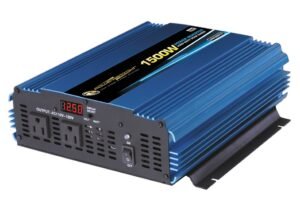YOUR LEADER IN POWER SOLUTIONS
Voltage Converters
Our voltage converters help to power your devices in another country than what they were initially intended. Make sure you select the right size converter for your application, as sizing it too small will result in the fuse blowing constantly.
Pure Sine Wave Inverters
Our pure sine wave inverters, sometimes known as true sine or pure wave, provide quality AC power for all of your devices. Our models produce an output wave that is equal to or better than what you might receive from the power company to your home or office.
Pure sine models are recommended for battery chargers, medical equipment, sensitive and scientific testing equipment, and laser printers.
Modified Sine Wave Inverters
Our modified sine wave inverters are an inexpensive way of converting your 12 or 24 volt DC battery bank into 110-120 volt AC (North American electrical power). These are a common and economical choice for most customers looking to install an inverter in their vehicle, camper, RV, and stationary setups.
















